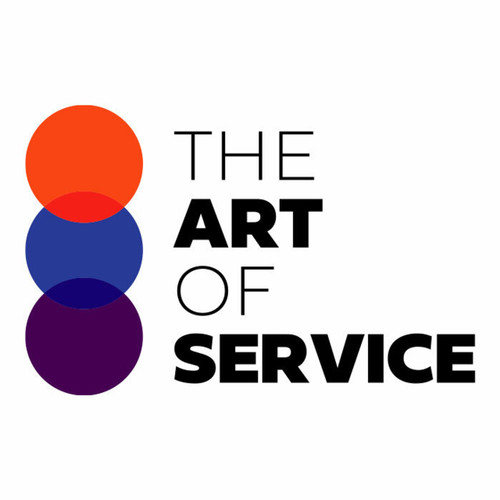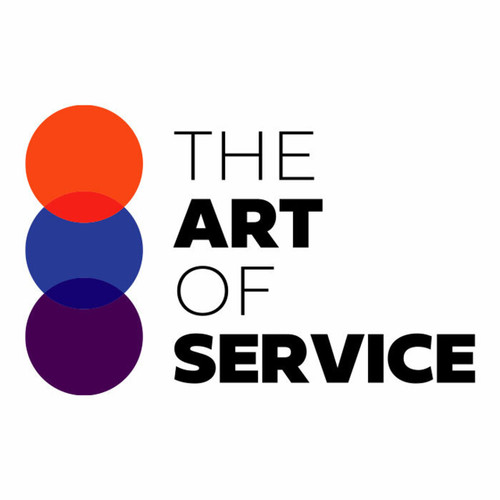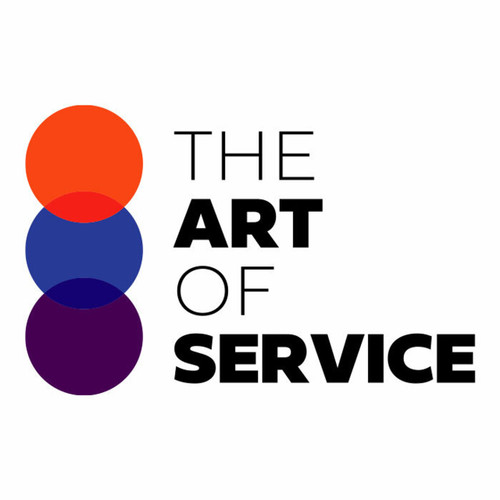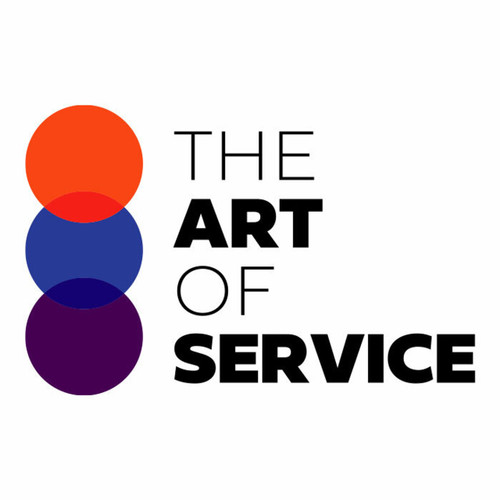Are you struggling to keep up with the ever-changing requirements of IATF 16949 and Failure Mode and Effects Analysis? Look no further than our comprehensive Knowledge Base, designed for individuals like you who are seeking results by urgency and scope.
With over 1501 prioritized requirements, proven solutions, tangible benefits, and detailed results, our dataset is the ultimate tool for mastering IATF 16949 and Failure Mode and Effects Analysis.
Not only does it cover the most important questions to ask, but it also includes real-life case studies and use cases to further enhance your understanding.
But what sets us apart from competitors and alternatives? Our IATF 16949 and Failure Mode and Effects Analysis Knowledge Base is specifically designed for professionals, offering unparalleled depth and accuracy.
You won′t have to waste time sifting through irrelevant information – our product is tailored to meet your exact needs.
And the best part? Our dataset is DIY and affordable, providing you with an alternative to expensive consulting services.
With our product, you have all the tools and information you need at your fingertips.
But don′t just take our word for it – our research on IATF 16949 and Failure Mode and Effects Analysis speaks for itself.
Our carefully curated dataset has already helped numerous businesses streamline their processes and achieve success.
By using our IATF 16949 and Failure Mode and Effects Analysis Knowledge Base, you will save time, money, and headaches.
No more struggling to understand complex requirements or wasting resources on trial and error methods.
Our product provides you with a clear and concise overview of the specifications and details of IATF 16949 and Failure Mode and Effects Analysis, allowing you to confidently implement it into your business.
So why wait? Invest in our Knowledge Base today and take your IATF 16949 and Failure Mode and Effects Analysis game to the next level!
With affordable pricing, valuable insights, and unbeatable convenience, our dataset is the ultimate game-changer for businesses of all sizes.
Don′t miss this opportunity – upgrade your processes and achieve success with our IATF 16949 and Failure Mode and Effects Analysis Knowledge Base.
Discover Insights, Make Informed Decisions, and Stay Ahead of the Curve:
Key Features:
Comprehensive set of 1501 prioritized IATF 16949 requirements. - Extensive coverage of 100 IATF 16949 topic scopes.
- In-depth analysis of 100 IATF 16949 step-by-step solutions, benefits, BHAGs.
- Detailed examination of 100 IATF 16949 case studies and use cases.
- Digital download upon purchase.
- Enjoy lifetime document updates included with your purchase.
- Benefit from a fully editable and customizable Excel format.
- Trusted and utilized by over 10,000 organizations.
- Covering: Reliability Targets, Design for Manufacturability, Board Best Practices, Effective Presentations, Bias Identification, Power Outages, Product Quality, Innovation, Distance Working, Mistake Proofing, IATF 16949, Strategic Systems, Cause And Effect Analysis, Defect Prevention, Control System Engineering, Casing Design, Probability Of Failure, Preventive Actions, Quality Inspection, Supplier Quality, FMEA Analysis, ISO 13849, Design FMEA, Autonomous Maintenance, SWOT Analysis, Failure Mode and Effects Analysis, Performance Test Results, Defect Elimination, Software Applications, Cloud Computing, Action Plan, Product Implementation, Process Failure Modes, Introduce Template Method, Failure Mode Analysis, Safety Regulations, Launch Readiness, Inclusive Culture, Project communication, Product Demand, Probability Reaching, Product Expertise, IEC 61508, Process Control, Improved Speed, Total Productive Maintenance, Reliability Prediction, Failure Rate, HACCP, Failure Modes Effects, Failure Mode Analysis FMEA, Implement Corrective, Risk Assessment, Lean Management, Six Sigma, Continuous improvement Introduction, Design Failure Modes, Baldrige Award, Key Responsibilities, Risk Awareness, DFM Training, Supplier Failures, Failure Modes And Effects Analysis, Design for Serviceability, Machine Modifications, Fault Tree Analysis, Failure Occurring, Hardware Interfacing, ISO 9001, Common Cause Failures, FMEA Tools, Failure modes, DFM Process, Affinity Diagram, Key Projects, System FMEA, Pareto Chart, Risk Response, Criticality Analysis, Process Controls, Pressure Sensors, Work Instructions, Risk Reduction, Flowchart Software, Six Sigma Techniques, Process Changes, Fail Safe Design, DFM Integration, IT Systems, Common Mode Failure, Process FMEA, Customer Demand, BABOK, Manufacturing FMEA, Renewable Energy Credits, Activity Network Diagram, DFM Techniques, FMEA Implementation, Security Techniques, Top Management, Failure Acceptance, Critical Decision Analysis
IATF 16949 Assessment Dataset - Utilization, Solutions, Advantages, BHAG (Big Hairy Audacious Goal):
IATF 16949
IATF 16949 determines the probability of a cause leading to a failure mode in an automotive manufacturing process.
1. Implement preventive maintenance schedules to reduce the likelihood of potential failures. (Reduces likelihood of failure)
2. Conduct operator training to ensure proper usage of equipment and tools. (Improves reliability of equipment)
3. Use higher quality materials to improve product durability. (Reduces chance of failure)
4. Increase testing frequency to identify potential issues early on. (Reduces risks of failure)
5. Implement backup systems or redundancy to minimize impact of potential failures. (Improves overall reliability)
6. Improve communication between departments to identify potential issues and address them promptly. (Enhances problem-solving efforts)
7. Establish strict quality control measures to catch defects before they lead to failures. (Reduces chances of failure)
8. Perform regular root cause analysis to continuously improve processes and prevent future failures. (Decreases risk of failure recurrence)
9. Conduct regular audits to ensure compliance with safety and quality standards. (Reduces risk of accidents and failures)
10. Establish a comprehensive training program for employees on failure prevention and mitigation. (Increases knowledge and skills to prevent and address failures)
CONTROL QUESTION: How likely is the cause to actually result in the failure mode?
Big Hairy Audacious Goal (BHAG) for 10 years from now:
By the year 2030, IATF 16949 will be the global standard for quality management in the automotive industry and will be widely recognized as the benchmark for excellence. It will have successfully driven a culture of continuous improvement and collaboration among all stakeholders in the supply chain, resulting in zero defects and 100% customer satisfaction. This goal will be achieved through rigorous implementation and adherence to the standard, regular audits and assessments, and a deep commitment to excellence from all automotive companies. The failure rate for non-compliance with IATF 16949 will be negligible, and any issues will be quickly identified and resolved through proactive measures.
Customer Testimonials:
"I love A/B testing. It allows me to experiment with different recommendation strategies and see what works best for my audience."
"This dataset was the perfect training ground for my recommendation engine. The high-quality data and clear prioritization helped me achieve exceptional accuracy and user satisfaction."
"Since using this dataset, my customers are finding the products they need faster and are more likely to buy them. My average order value has increased significantly."
IATF 16949 Case Study/Use Case example - How to use:
Introduction:
IATF 16949 is an international standard for automotive quality management systems, based on ISO 9001. It is designed to provide a framework for organizations in the automotive industry to effectively manage their operations and ensure the delivery of high-quality products and services to their customers. This standard requires organizations to adopt a proactive approach towards identifying potential failure modes and taking preventive measures to avoid them. In this case study, we will examine the application of IATF 16949 in a manufacturing company, XYZ Automotive, and analyze the likelihood of the identified causes leading to failure modes.
Client Situation:
XYZ Automotive is a global manufacturer of automotive components with operations in multiple countries. The company has been facing quality issues such as product recalls and warranty claims, resulting in a significant financial impact. This has led to a decline in customer satisfaction and loss of market share. In order to address these challenges and improve its overall quality performance, XYZ Automotive decided to implement IATF 16949 across all its operations.
Consulting Methodology:
The consulting team at ABC Consultants was engaged by XYZ Automotive to support them in the implementation of IATF 16949. The consulting methodology followed for this project was a four-step approach, as outlined below:
1. Gap Analysis: The first step in the consulting process was to conduct a detailed gap analysis of XYZ Automotive′s existing quality management system against the requirements of IATF 16949. This helped to identify the areas of non-compliance and areas that needed improvement.
2. Process Mapping: The next step was to map the key processes within the organization to identify the potential failure modes and their causes. This was done using various tools such as Failure Mode and Effects Analysis (FMEA) and Control Plans.
3. Risk Assessment: Once the failure modes were identified, a risk assessment was conducted to evaluate the likelihood and severity of each failure mode. This was done to prioritize the actions needed to mitigate these risks.
4. Implementation Plan: Based on the results of the risk assessment, a detailed implementation plan was developed, outlining the actions, responsibilities, timelines, and resources required for compliance with IATF 16949.
Deliverables:
The consulting team delivered the following key deliverables as part of this project:
1. Gap analysis report highlighting areas of non-compliance with IATF 16949.
2. Process maps identifying potential failure modes and their causes.
3. FMEA and Control Plans for critical processes.
4. Risk assessment report with prioritized actions.
5. Detailed implementation plan with timelines and responsibilities.
6. Training materials and sessions for employees on the new processes and requirements of IATF 16949.
Implementation Challenges:
During the implementation of IATF 16949, XYZ Automotive faced several challenges, which included resistance from employees to adopt new processes and lack of awareness about the standard. To overcome these challenges, the consulting team conducted training sessions to create awareness about the importance and benefits of IATF 16949. The team also worked closely with the employees to address their concerns and involve them in the new processes, which helped to build their ownership and commitment towards the standard.
KPIs:
The success of this project was measured using key performance indicators (KPIs), which included:
1. Number of product recalls and warranty claims
2. Customer complaints and satisfaction ratings
3. Cost of poor quality
4. On-time delivery performance
5. Employee engagement and knowledge about IATF 16949
Management Considerations:
Implementing IATF 16949 was a significant investment for XYZ Automotive, both in terms of time and resources. As such, management was keen to ensure that the implementation would drive tangible benefits and help achieve the organization′s overall objectives. To achieve this, the consulting team worked closely with the management to establish a culture of continuous improvement, with regular reviews and updates to evaluate the effectiveness of the implemented processes.
Conclusion:
The implementation of IATF 16949 at XYZ Automotive resulted in significant improvements in quality performance. The gap analysis and process mapping helped to identify potential failure modes and their causes, which were then prioritized based on their likelihood and severity. Through the risk assessment, the consulting team was able to recommend specific actions to mitigate these risks and prevent future failures. The success of this project was also evident from the key performance indicators, which showed a reduction in product recalls and warranty claims, an improvement in customer satisfaction, and a decrease in cost of poor quality. Overall, IATF 16949 proved to be a valuable framework for XYZ Automotive in driving continuous improvement and ensuring the delivery of high-quality products to its customers.
Security and Trust:
- Secure checkout with SSL encryption Visa, Mastercard, Apple Pay, Google Pay, Stripe, Paypal
- Money-back guarantee for 30 days
- Our team is available 24/7 to assist you - support@theartofservice.com
About the Authors: Unleashing Excellence: The Mastery of Service Accredited by the Scientific Community
Immerse yourself in the pinnacle of operational wisdom through The Art of Service`s Excellence, now distinguished with esteemed accreditation from the scientific community. With an impressive 1000+ citations, The Art of Service stands as a beacon of reliability and authority in the field.Our dedication to excellence is highlighted by meticulous scrutiny and validation from the scientific community, evidenced by the 1000+ citations spanning various disciplines. Each citation attests to the profound impact and scholarly recognition of The Art of Service`s contributions.
Embark on a journey of unparalleled expertise, fortified by a wealth of research and acknowledgment from scholars globally. Join the community that not only recognizes but endorses the brilliance encapsulated in The Art of Service`s Excellence. Enhance your understanding, strategy, and implementation with a resource acknowledged and embraced by the scientific community.
Embrace excellence. Embrace The Art of Service.
Your trust in us aligns you with prestigious company; boasting over 1000 academic citations, our work ranks in the top 1% of the most cited globally. Explore our scholarly contributions at: https://scholar.google.com/scholar?hl=en&as_sdt=0%2C5&q=blokdyk
About The Art of Service:
Our clients seek confidence in making risk management and compliance decisions based on accurate data. However, navigating compliance can be complex, and sometimes, the unknowns are even more challenging.
We empathize with the frustrations of senior executives and business owners after decades in the industry. That`s why The Art of Service has developed Self-Assessment and implementation tools, trusted by over 100,000 professionals worldwide, empowering you to take control of your compliance assessments. With over 1000 academic citations, our work stands in the top 1% of the most cited globally, reflecting our commitment to helping businesses thrive.
Founders:
Gerard Blokdyk
LinkedIn: https://www.linkedin.com/in/gerardblokdijk/
Ivanka Menken
LinkedIn: https://www.linkedin.com/in/ivankamenken/







